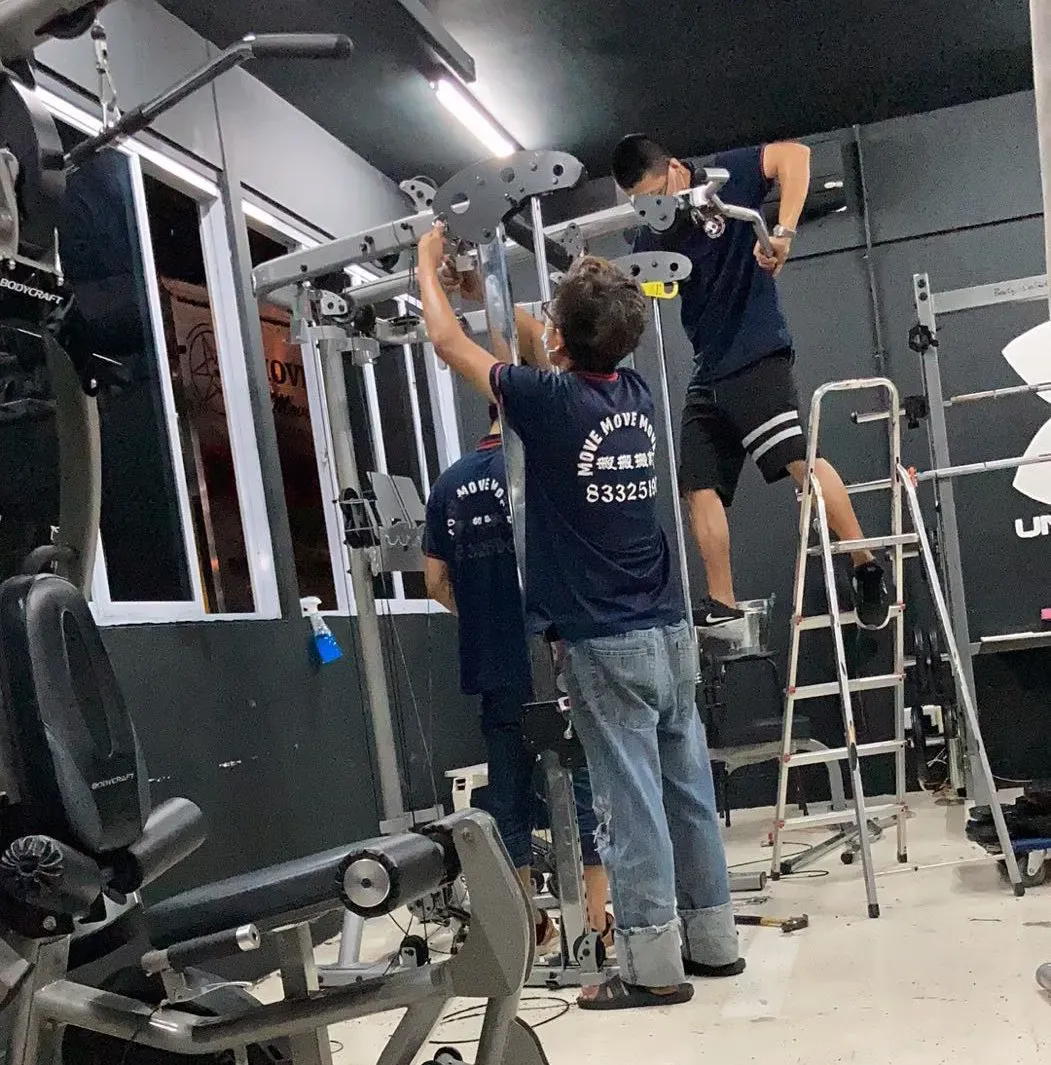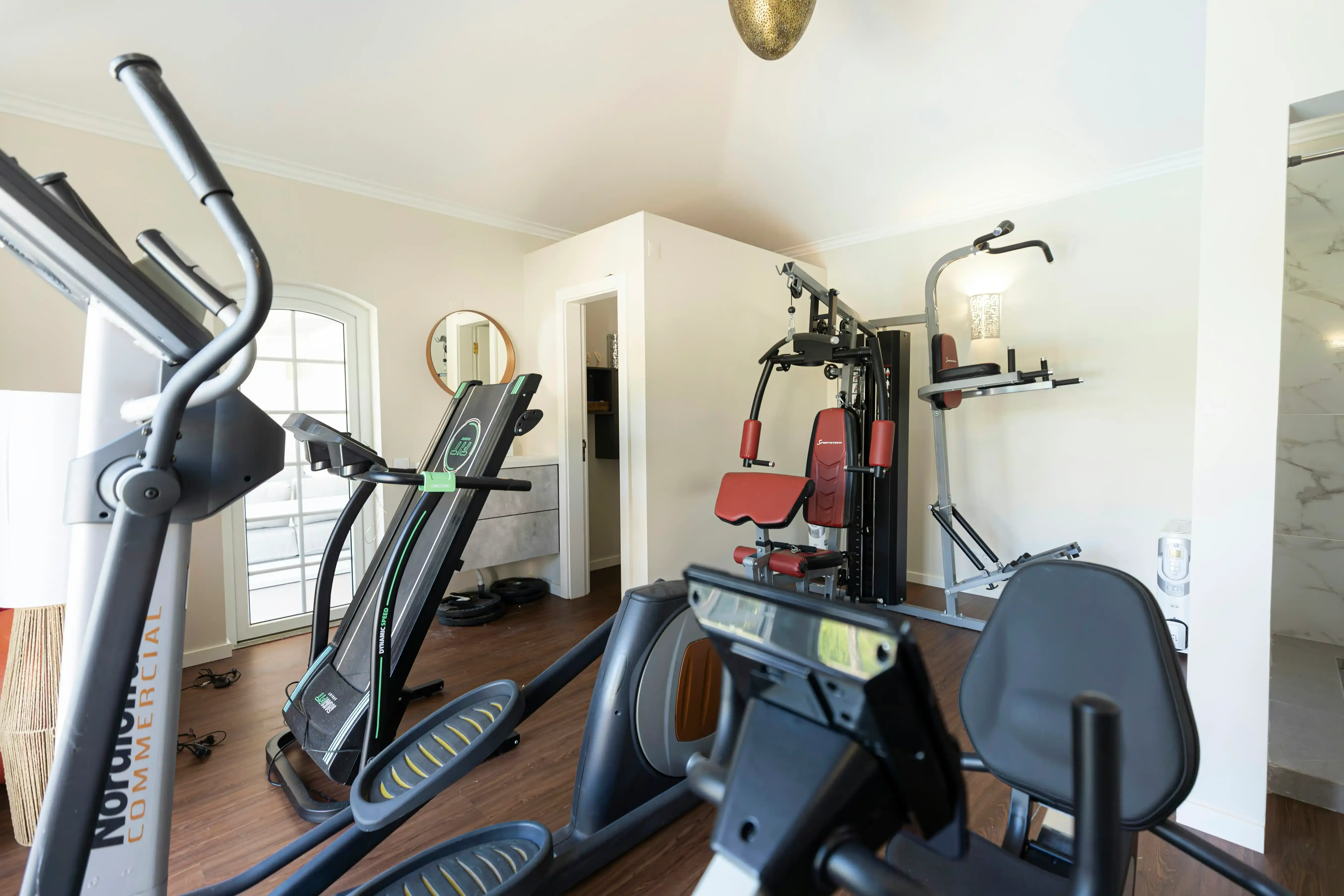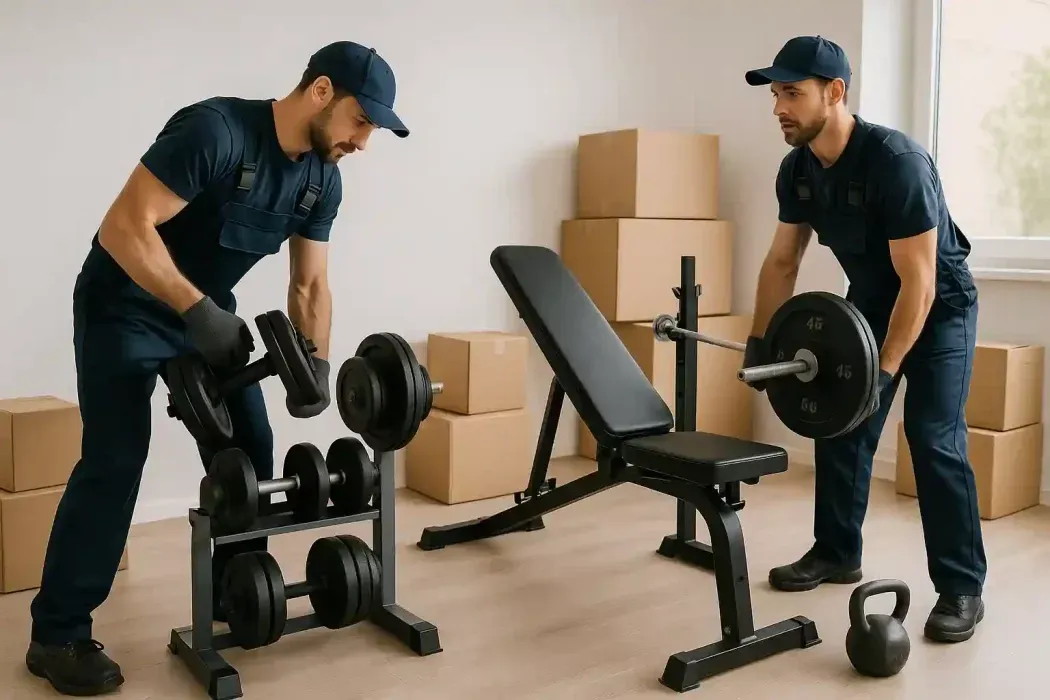Table of Contents
So, you've built that perfect workout sanctuary right in your own home. Treadmill humming, weights racked, maybe even a fancy all-in-one machine taking pride of place. It's your personal fitness zone. But now, life's throwing a curveball – you're moving. Suddenly, that beloved squat rack looks less like a tool for gains and more like an immovable steel beast plotting your demise. Trying to wrestle a 300-pound elliptical down a flight of stairs sounds like a guaranteed trip to the chiropractor, or worse. This is precisely where professional home gym equipment movers come in. They're not just movers; they're specialists who understand the unique challenges of relocating heavy, awkward, and often expensive fitness gear. In this article, we'll break down why hiring experts for your home gym equipment is a smart move, what services dedicated home gym equipment movers provide, how to find the right crew, understand the costs involved, and even how to get your gear ready for their arrival. Let's talk about saving your back and your equipment.
Why You Shouldn't Move That Treadmill Yourself: The Case for Home Gym Equipment Movers
Why You Shouldn't Move That Treadmill Yourself: The Case for Home Gym Equipment Movers
The Grim Reality of Heavy Lifting
Look, I get it. You've lifted heavy things before. You feel strong, capable. That treadmill sitting there looks like it should be manageable with a buddy and some determination. But let's be real for a second. These machines are deceptively heavy and awkwardly shaped. They weren't designed with easy moving in mind. Attempting to muscle a 200-pound elliptical or a bulky weight machine through doorways, down stairs, or around tight corners is a recipe for disaster. You're not just risking a strained back; you could pull something serious, drop the equipment on your foot, or even worse, take a tumble yourself. It's not about your strength; it's about physics, leverage, and the sheer unwieldiness of the items.
Damage Control: Your Gear and Your House
Beyond the personal injury potential, consider the integrity of your expensive fitness gear. Treadmills have delicate electronics and motors that don't appreciate being jostled violently or dropped. Weight machines have intricate cable systems and pulleys that can get bent or snapped. Even dropping a heavy dumbbell on your hardwood floor is going to leave a mark you won't forget. Your walls, doorframes, and banisters are also prime targets for scrapes, dents, and gouges when you're trying to squeeze a rogue bench press through a narrow hallway. This is precisely why dedicated home gym equipment movers exist. They have the tools, the experience, and the manpower to disassemble, protect, and transport these items safely, protecting both your investment and your property.
- Risk of personal injury (strains, sprains, breaks)
- Damage to the fitness equipment itself
- Damage to floors, walls, and doorframes
- Lack of proper tools or techniques for safe handling
- Time and energy wasted on a difficult task
What Professional Home Gym Equipment Movers Handle
What Professional Home Gym Equipment Movers Handle
Taking Apart the Beast: Disassembly Done Right
so you've got that multi-station jungle gym or a treadmill that looks like it belongs on a commercial gym floor. Trying to move these things fully assembled is asking for trouble. Professional home gym equipment movers know this. Their first step is usually careful disassembly. They understand how these complex machines fit together – the bolts, the cables, the weight stacks, the console wiring. They don't just yank things apart; they systematically break down the equipment into manageable pieces. Think of it like taking apart a giant LEGO set, but where losing a single tiny pin means the whole thing won't work later. They label parts, bag hardware, and generally handle it with more respect than you might after wrestling with it for an hour.
The Heavy Haul: Specialized Tools and Techniques
Once everything is in pieces (or if it's a solid, heavy item like a power rack base), the real moving begins. This isn't just about brute strength. Home gym equipment movers arrive equipped with the right gear. We're talking heavy-duty dollies, furniture pads thick enough to protect against serious impacts, moving blankets, straps, and sometimes even specialized lifting equipment for truly massive pieces. They know how to navigate stairs, tight corners, and uneven surfaces while keeping the load stable and controlled. They've practiced the lifts, the pivots, the turns – they make it look easier than it is because they do it every day. It’s the difference between trying to carry a grand piano yourself and watching professional piano movers work.
Common Equipment Handled by Professional Movers:
- Treadmills (often require motor and console detachment)
- Ellipticals (can be awkward and heavy)
- Weight Machines (multi-stations, cable machines need disassembly)
- Power Racks and Squat Racks (heavy frames, many bolts)
- Benches (adjustable benches can be surprisingly heavy)
- Dumbbells and Plates (requires careful packing and handling)
- Exercise Bikes (spin bikes, recumbent bikes)
- Rowing Machines
Putting It Back Together: Reassembly and Placement
Their job isn't finished when they get the pieces into your new place. A key part of what professional home gym equipment movers do is reassembly. They'll put your machine back together in its new spot. This means reconnecting cables, reattaching consoles, securing bolts, and making sure everything is stable and functional. They won't just dump a pile of parts in the middle of the room and wish you luck. They aim to leave your home gym ready for your next workout, minimizing the downtime between packing up your old space and getting back to your routine in the new one. It's a full-service approach that saves you the headache of deciphering cryptic instruction manuals and trying to remember where that one crucial screw went.
Finding the Best Home Gym Equipment Movers: Questions to Ask
Picking the Right Pros for the Job
Alright, so you're convinced you need help with that iron jungle. Good call. Now comes the task of actually finding capable home gym equipment movers. Don't just grab the first listing you see. This isn't like moving boxes of clothes. You need specialists. Think of it like finding a mechanic for a classic car versus a modern sedan – both are cars, but the expertise needed is different. You need movers who specifically advertise and have experience with fitness equipment. Start by asking potential movers if they have dedicated teams or specific training for handling heavy, sensitive gym machines. Ask how often they move treadmills, weight racks, or ellipticals. Their answers, or lack thereof, will tell you a lot about whether they're just general movers who *might* take your stuff or actual home gym equipment movers who know what they're doing.
Understanding the Cost of Home Gym Equipment Movers
Understanding the Cost of Home Gym Equipment Movers
Factors That Make the Price Tag Jump
Alright, let's talk money. Nobody likes surprise bills, especially when it comes to moving that behemoth squat rack. The cost of hiring home gym equipment movers isn't a one-size-fits-all deal. It depends on a few key things. First off, how much gear do you actually have? Moving a single treadmill is way different than relocating a full multi-station gym, a power cage, and a few hundred pounds of plates. The weight and complexity of the equipment are huge factors. Disassembling and reassembling a complicated machine takes more time and expertise than just hauling a stationary bike. Location matters too – how far are they moving it? Is it across town or just to the next room? And don't forget access. Are they navigating narrow staircases, tight turns, or long hallways? All these variables add up and influence the final price you'll pay for professional home gym equipment movers.
Hourly Rates vs. Flat Fees: What's the Deal?
When you start getting quotes from home gym equipment movers, you'll likely encounter two main pricing models: hourly rates or flat fees. Hourly rates seem simple enough – they charge you for the time it takes, usually with a minimum number of hours. This can be good if you have a straightforward move or aren't exactly sure how long it will take. However, it also means if unexpected issues pop up (like a bolt that just won't budge during disassembly), the clock keeps ticking, and your cost climbs. Flat fees, on the other hand, give you a fixed price for the entire job based on the movers' assessment. This offers more predictability, which many people prefer. A good home gym equipment moving company will visit or ask for detailed photos and descriptions to give you an accurate flat fee quote. Make sure you understand exactly what's included in that flat fee.
Common Factors Affecting Cost:
- Quantity and type of equipment
- Total weight of the items
- Complexity of disassembly and reassembly
- Distance of the move
- Difficulty of access at both locations (stairs, tight spaces)
- Need for specialized lifting equipment
- Insurance coverage requested
Getting a Quote That Won't Make You Sweat More Than Your Workout
So, how do you avoid getting ripped off? Get multiple quotes. Seriously, contact at least three different home gym equipment movers. Don't just ask for a number over the phone. A reputable company specializing in moving fitness gear will want details. Provide them with a clear list of everything you need moved. Send pictures or even a video walkthrough of your space and the equipment. Be upfront about any challenges like stairs or tight doorways. When comparing quotes, look beyond just the bottom line. Ask what's included: Does it cover disassembly? Reassembly? Insurance? Are there extra charges for stairs or long carries? A detailed quote helps prevent nasty surprises on moving day. Remember, the cheapest option isn't always the best, especially when trusting someone with your expensive gear.
Preparing Your Gear for the Home Gym Equipment Movers
Preparing Your Gear for the Home Gym Equipment Movers
Clean It Up and Secure Loose Bits
Before the home gym equipment movers even ring your doorbell, take some time to prep your gear. This isn't about doing their job for them; it's about making their job easier and protecting your stuff. Wipe down the machines. Years of sweat and dust aren't exactly a great look, and frankly, they can make things slippery. Remove any loose accessories – weight pins, water bottles, phone holders, towels draped over handlebars. Bag up anything small and put it aside. If your treadmill folds, secure it properly according to the manufacturer's instructions. Some machines have safety pins or straps for transport mode. Find them, use them. This prevents parts from swinging loose and getting damaged or causing injury during the move.
- Wipe down surfaces to remove sweat and dust.
- Remove all loose accessories (pins, bottles, towels).
- Bag and label small hardware if you've already started disassembling.
- Secure folding parts or moving arms with tape or straps (carefully, without damaging surfaces).
- Check manufacturer manual for specific transport instructions.
Clear the Path and Point Out the Puzzles
On moving day, make sure the path from your home gym to the truck is clear. Seriously, clear everything. Move furniture, rugs, potted plants – anything that could be an obstacle for the home gym equipment movers maneuvering heavy, bulky items. Measure doorways and hallways beforehand if you have any doubts about clearance and mention potential tight spots to the crew leader when they arrive. If a machine requires specific disassembly steps you know about, or if there's a particular part that's tricky, point it out. Good communication helps the home gym equipment movers work efficiently and avoid unexpected delays or damage. Think of it as being the helpful co-pilot, not the backseat driver.
Don't Be a Hero: Let Home Gym Equipment Movers Handle the Heavy Lifting
Alright, let's be real. That squat rack isn't getting any lighter, and your back isn't getting any younger. We've covered the sheer pain and potential damage involved in trying to move heavy fitness gear yourself, what dedicated home gym equipment movers actually do, how to vet them, what you might pay, and how to prep your stuff. The bottom line? While the DIY spirit is admirable in many areas of life, trying to wrestle a fully assembled multi-station gym through a doorway is usually a bad idea. Hiring professionals who specialize in home gym equipment movers isn't an indulgence; it's often a necessity to protect your investment and, more importantly, your physical well-being. Save the heavy lifting for your actual workouts. Get a quote, ask the right questions, and leave the moving to the experts.